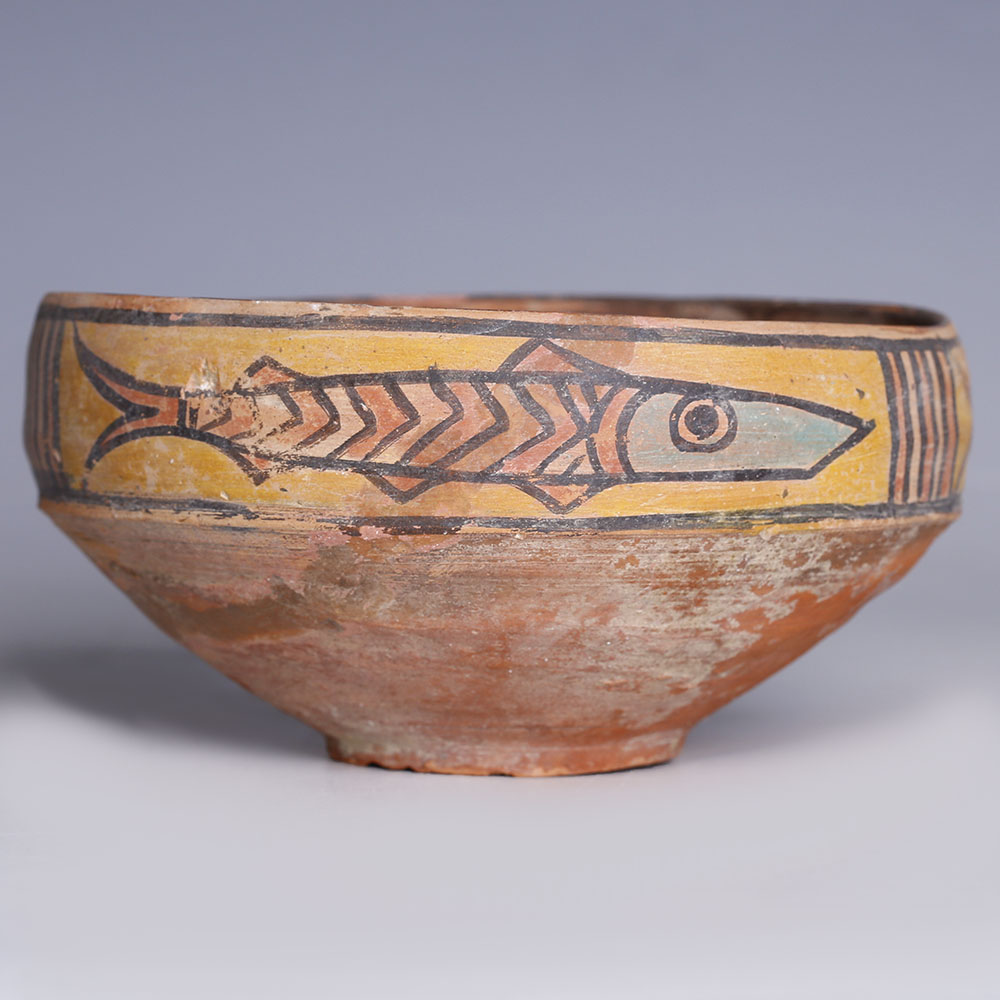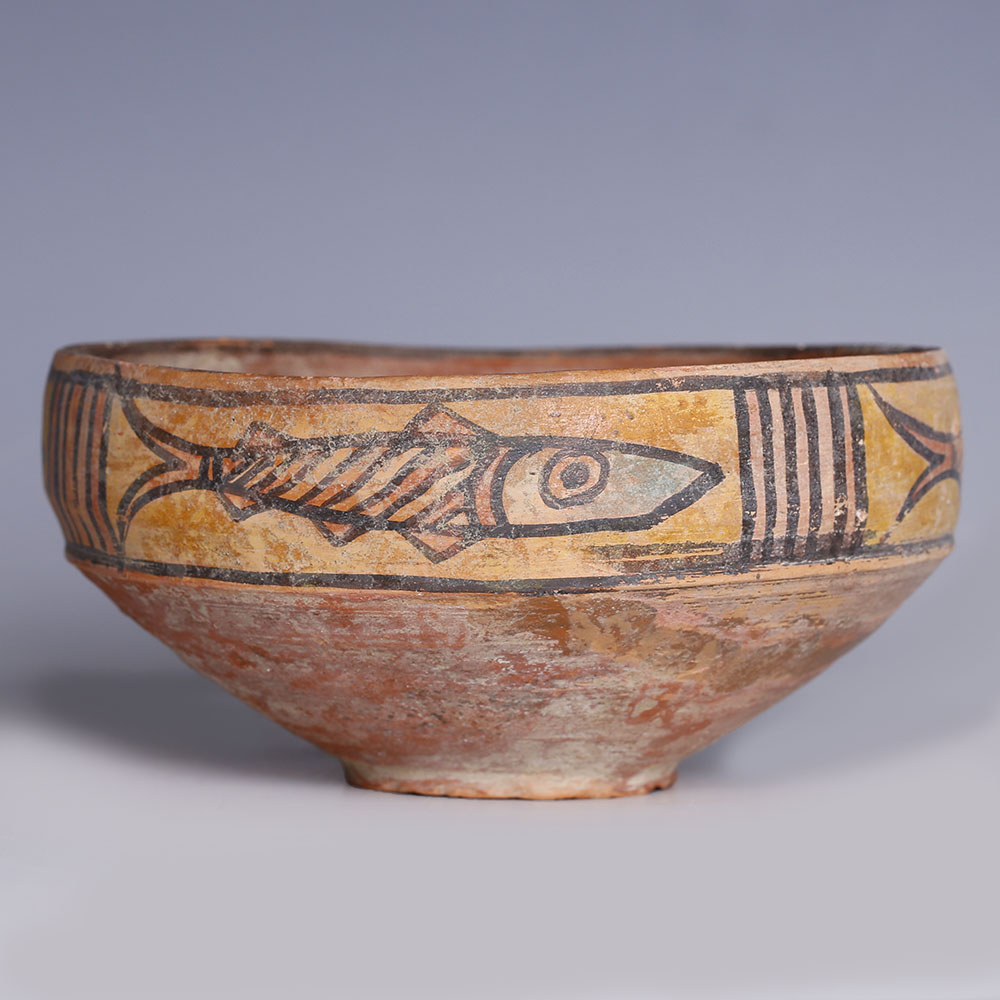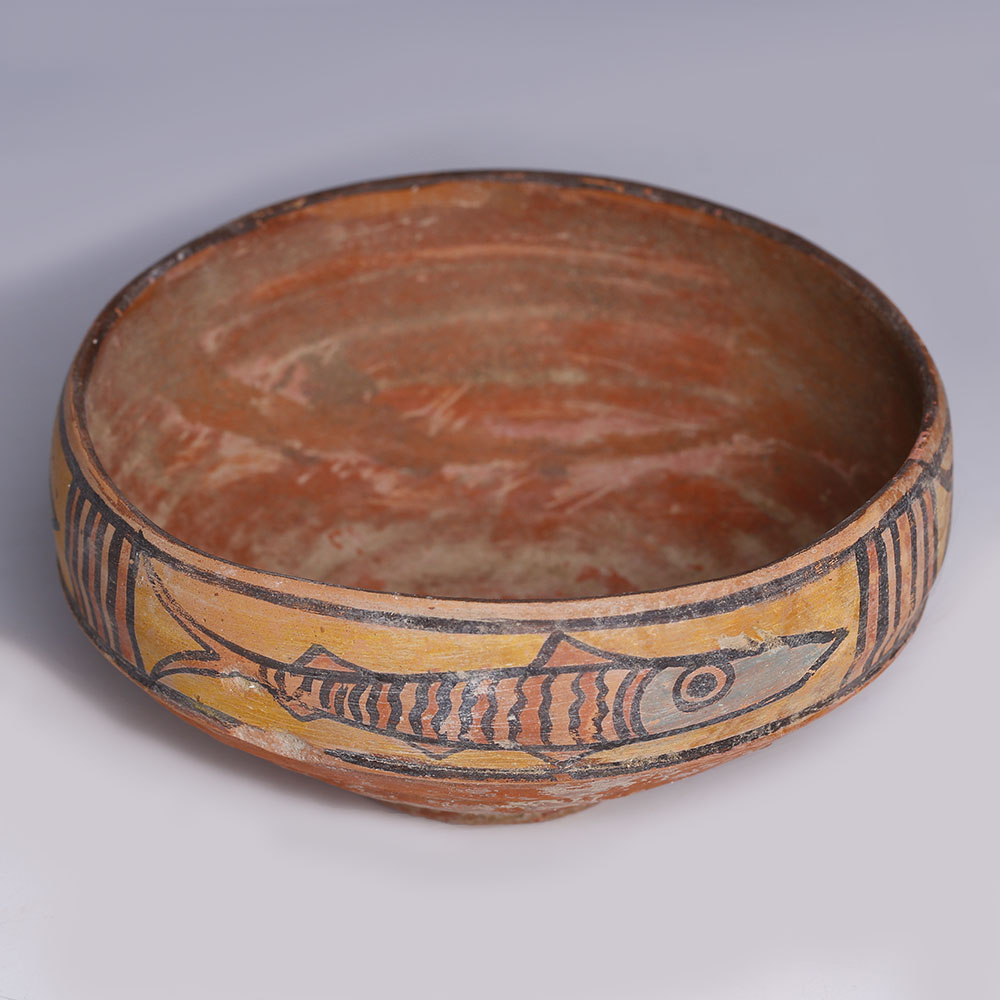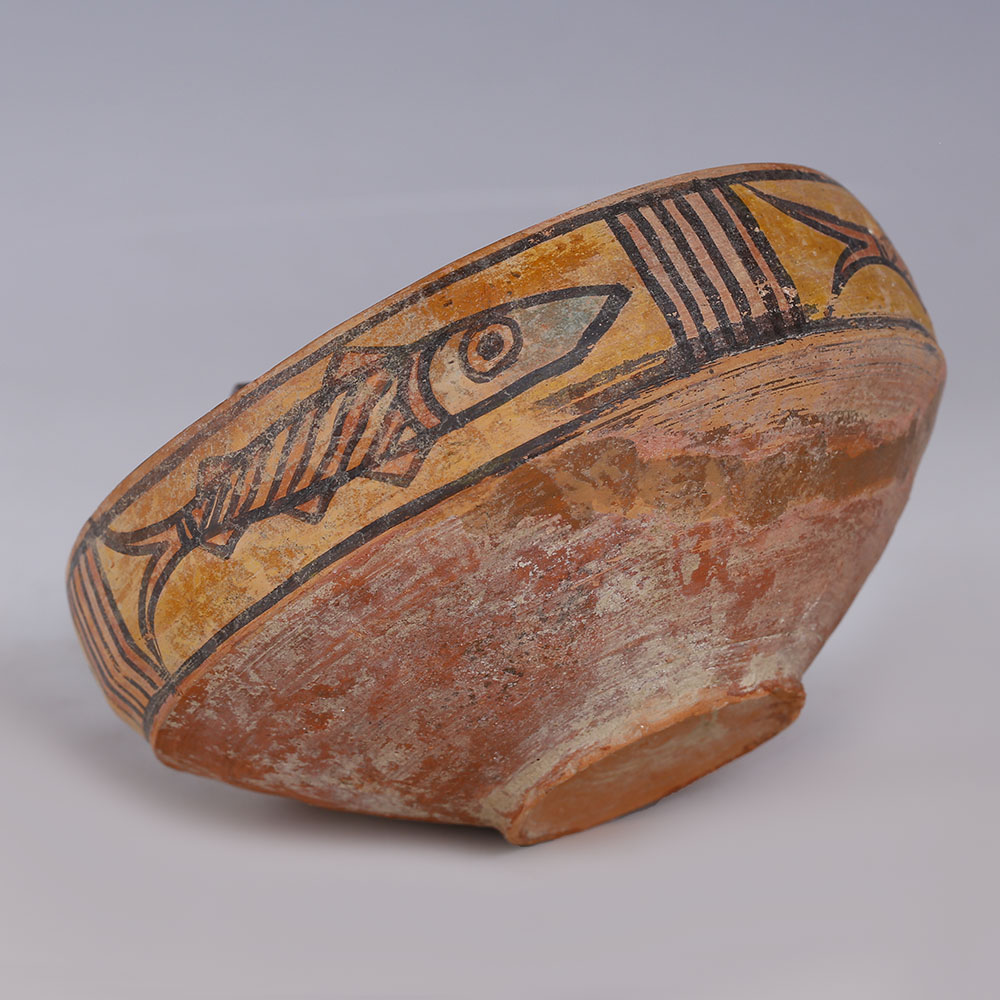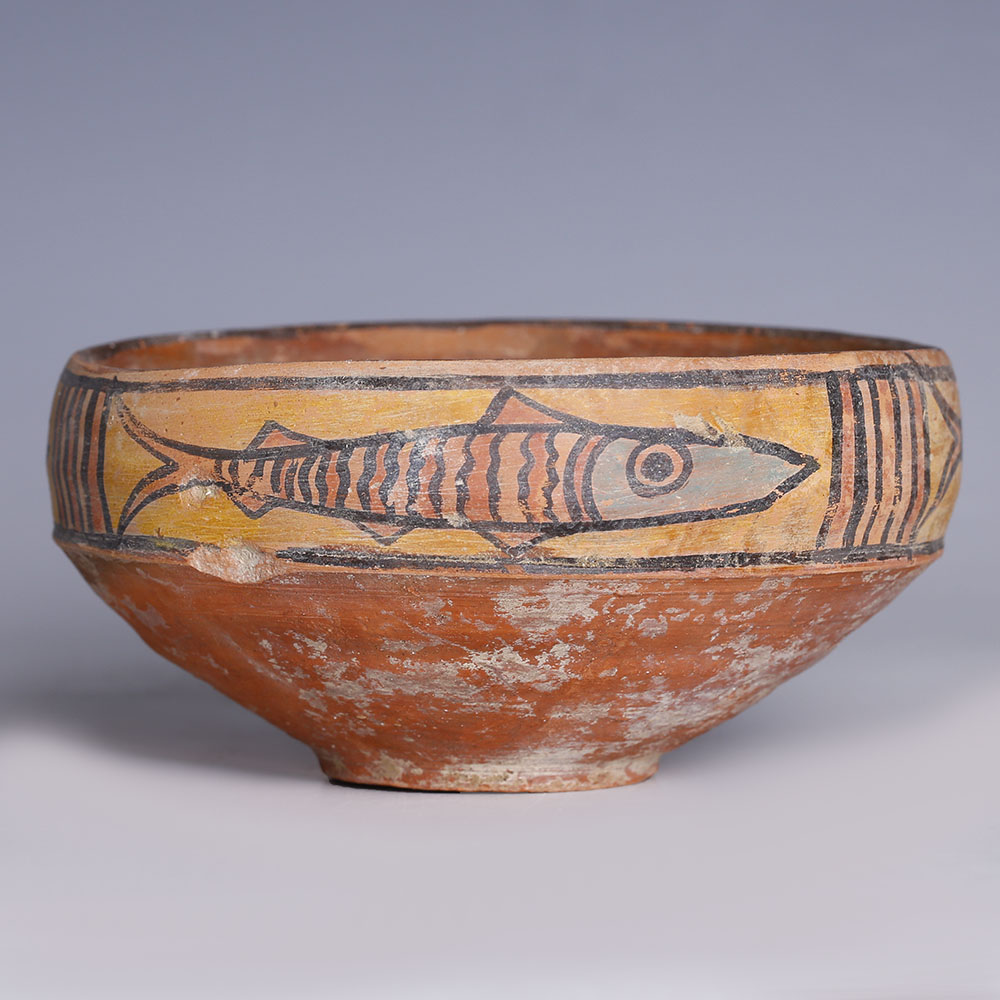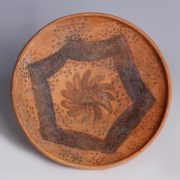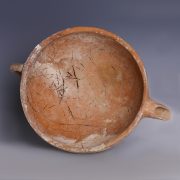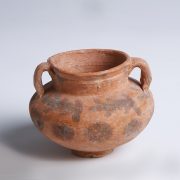The Indus Valley Civilisation extended from what today is north-east Afghanistan to Pakistan and north-west India. It was one of the three early and widespread cradles of civilisation along with Ancient Egypt and Mesopotamia. At its peak, the Indus Valley Civilisation, which included such sites as Harappa and Mohenjo-Daro, may have had a population of over five million, who developed new techniques in pottery, seal carving, and metallurgy. Most of the pottery from such civilization can be dated back to the Nal culture, which flourished in the northwest region of the Indus Valley. Their terracotta works are characterized by a linear style and geometric repetition of shapes and lines. Also, animals and plants, rendered in a stylised manner, abounded on their creations. Pigments would have been added to enrich such vessels, which would have been used in everyday life but also placed in the tombs with the deceased as grave goods.
Indus Valley Terracotta Bowl with Polychromatic Fish Decoration
$224.12
A finely modelled Indus Valley polychrome bowl featuring a horizontal register depicting three stylised fish alternating with panels of geometrical decoration to the outside. The inside of the bowl is undecorated. The vessel features a flat rounded foot, from which its flaring body rises leading to a cylindrical rim. The multicoloured pigments are still very vivid and make this item an invaluable addition to any collection.
Condition: Very fine. A few chips to the surface.
SOLD
| Weight | 267.9 g |
|---|---|
| Dimensions | W 12.5 x H 6 cm |
| Culture | |
| Pottery and Porcelain | |
| Region |
